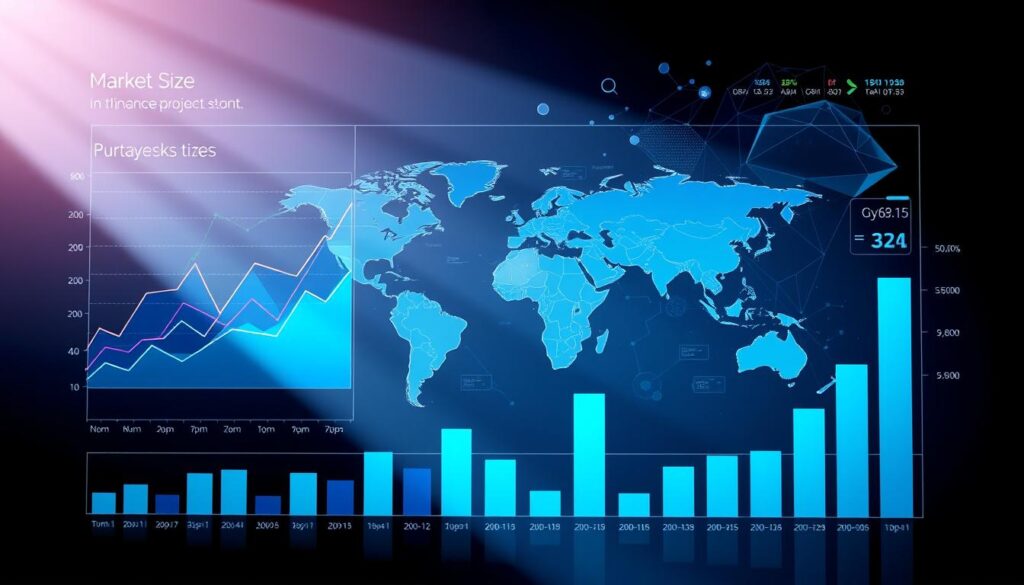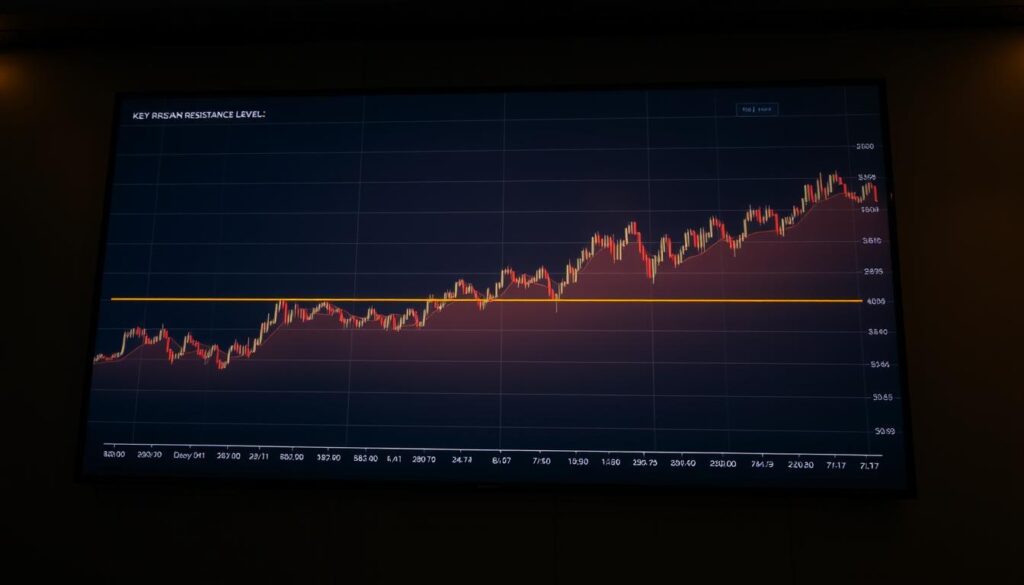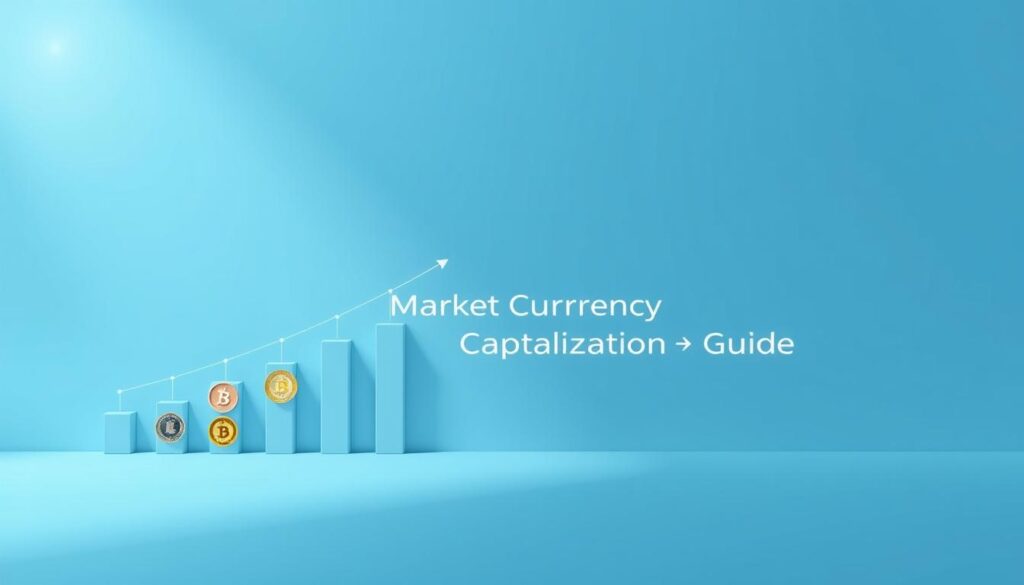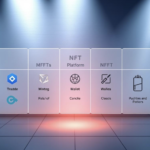Now Reading: Unlock Insights with Decentralized Finance Market Analytics Platform
- 01
Unlock Insights with Decentralized Finance Market Analytics Platform
Unlock Insights with Decentralized Finance Market Analytics Platform

The global financial landscape is evolving at an unprecedented pace. With projections estimating growth from $20.48 billion in 2024 to over $231 billion by 2030, new tools are essential for navigating this dynamic space. Advanced analytics systems now empower users to make informed decisions by synthesizing real-time information across protocols.
These platforms aggregate critical metrics like total value locked (TVL) and yield farming opportunities. Investors gain visibility into risk profiles, protocol performance, and emerging trends. For institutions and blockchain firms, this intelligence is no longer optional—it’s a competitive necessity.
Current data reveals varying growth forecasts, with some analysts predicting a $1.25 trillion valuation by 2034. This disparity underscores the need for reliable, up-to-the-minute analysis. By leveraging actionable insights, stakeholders can adapt strategies to capitalize on shifting conditions.
Key Takeaways
- The sector could grow from $20.48 billion to $231.19 billion by 2030, with some estimates exceeding $1 trillion
- Real-time data aggregation helps track metrics like TVL and yield farming returns
- Analytical tools enable comparison of protocol performance and risk assessment
- Institutional adoption is rising as the ecosystem matures
- Accurate insights are critical for navigating regulatory and competitive challenges
Industry Overview of the Decentralized Finance Sector
A new era of financial tools is emerging, powered by blockchain-based solutions. These systems now manage billions in assets globally, with North America leading at 36% of total revenue. Blockchain infrastructure dominates the space, representing 42% of sector investments.
Market Size, Key Metrics, and Growth Rates
The sector’s value surged past $20 billion in 2024, with projections suggesting 11x expansion by 2030. Three metrics reveal its health:
- Total Value Locked (TVL): $98 billion across major protocols
- Daily transactions: 4.7 million peer-to-peer exchanges
- User growth: 12% monthly increase in active wallets
Major Trends and Innovation Drivers
Smart contracts now automate 83% of lending processes, cutting costs by 60% compared to traditional banks. Cross-chain tools enable asset transfers between networks in under 90 seconds. Emerging trends include:
- Tokenized real-world assets growing 210% annually
- Regulatory frameworks taking shape in 14 U.S. states
- Micro-investment platforms serving 28 million unbanked users
Global Market Trends and Regional Dynamics in DeFi
Geographical shifts are reshaping how digital asset ecosystems operate worldwide. Regional adoption patterns reveal stark contrasts in infrastructure maturity and regulatory approaches. Three key areas drive sector expansion while shaping cross-border investment strategies.

North America’s Commanding Position
The U.S. and Canada account for over 36% of total sector revenue. Web3 infrastructure investments and clear compliance guidelines fuel this leadership. Major protocol developers cluster in tech hubs like Silicon Valley and Austin, creating network effects that attract global capital.
Asia Pacific’s Accelerated Expansion
Japan and Singapore recorded 78% year-over-year growth in digital asset transactions. Favorable tax policies and mobile-first populations enable rapid scaling. South Korea’s blockchain adoption rate now exceeds traditional stock market participation among millennials.
| Region | Strategic Advantage | User Growth (2024) |
|---|---|---|
| North America | Regulatory clarity | +22% |
| Asia Pacific | Mobile integration | +41% |
| Europe | MiCA compliance | +29% |
Europe’s Markets in Crypto-Assets framework sets precedent for 27 member states. This standardization reduces legal uncertainties, encouraging platform development in Frankfurt and Paris. Meanwhile, Latin America sees surging demand for inflation-resistant digital solutions.
Component Analysis: Blockchain Technology and Smart Contracts
The backbone of next-gen financial systems combines transparent ledgers and automated agreements. These innovations now power 83% of automated lending processes while cutting operational costs by 60%. With blockchain infrastructure holding 42% of sector investments, its dominance stems from three key advantages.

Blockchain Technology’s Impact on Efficiency
Distributed ledger systems slash transaction fees by 74% compared to traditional banking networks. Real-time verification across nodes eliminates reconciliation delays, processing 4,700 transactions per second on optimized chains. Major networks demonstrate varied capabilities:
| Network | Speed (TPS) | Avg Cost | Active Projects |
|---|---|---|---|
| Ethereum | 30 | $1.20 | 4,100+ |
| Binance Smart Chain | 300 | $0.15 | 1,900+ |
| Polygon | 7,200 | $0.01 | 850+ |
Layer 2 solutions boost throughput while maintaining security through zero-knowledge proofs. This scalability enables institutions to handle 28 million daily micro-transactions.
Smart Contracts as Catalysts for Change
Self-executing code automates complex processes like collateral swaps in under 12 seconds. Over 60% of lending platforms now use algorithmic risk assessments in their agreements. Key innovations include:
- Flash loans enabling $500M arbitrage opportunities
- Automated yield strategies generating 18% APY
- Cross-chain bridges moving assets in 90 seconds
Third-party audits now catch 92% of vulnerabilities before deployment. This security focus helps protect $98B in locked assets across major protocols.
Application Insights: Data Analytics, Payments, and More
Modern financial ecosystems thrive on data-driven strategies and seamless transactions. Blockchain-based tools now address critical gaps in traditional systems through transparent operations and peer-to-peer solutions.

Data & Analytics for Informed Decision-Making
The data analytics sector dominated 2024 with 38% market share. Open blockchain networks enable real-time tracking of asset flows and protocol performance. Users access insights like:
- Yield comparisons across 4,100+ protocols
- Risk assessments updated every 90 seconds
- Historical trend analysis spanning 5+ years
These capabilities help institutions optimize strategies faster than traditional methods. Third-party tools now process 7.2 million data points daily.
Innovative Payment Solutions and P2P Exchanges
Payment applications show 68% annual growth—the fastest in the sector. Direct crypto transfers eliminate banking intermediaries, cutting fees by 83%. Key developments include:
| Solution | Speed | Cost |
|---|---|---|
| Cross-border payments | Instant | $0.12 avg |
| Recurring billing | Automated | 0.5% fee |
| Merchant processing | 2 sec confirm | 1.2% avg |
Emerging tools enable programmable money streams for subscriptions and payroll. Over 28 million users now leverage these financial services globally.
Evaluating Market Size, Forecasts, and Growth Projections

Understanding sector expansion requires dissecting conflicting projections from leading analysts. Three distinct models predict valuations between $231B and $1.25T by 2034, with compound annual growth rates (CAGR) ranging from 26.9% to 53.7%. These disparities stem from varying assumptions about adoption curves and technological advancements.
Revenue Forecast and CAGR Analysis
The most aggressive model suggests 53.7% CAGR through 2030, fueled by institutional participation and cross-chain interoperability. A moderate forecast predicts 45.8% growth until 2034, while conservative estimates account for regulatory hurdles with 26.9% CAGR. Key differentiators include:
| Forecast Period | Starting Value | Projected Value | CAGR |
|---|---|---|---|
| 2024-2030 | $20.48B | $231.19B | 53.7% |
| 2024-2034 | $29.1B | $1.25T | 45.8% |
| 2024-2032 | $71B | $457.35B | 26.9% |
Four factors explain these variations:
- Inclusion criteria for protocol layers
- Geographic adoption rates
- Regulatory scenario modeling
- Technology implementation timelines
Emerging payment solutions and automated yield strategies drive bullish projections. However, security concerns and CBDC competition could slow expansion. Strategic planners should:
- Compare multiple models
- Monitor institutional onboarding rates
- Assess regional compliance frameworks
Regional Performance and Market Share Distribution
Global adoption patterns reveal sharp contrasts in how regions embrace digital asset solutions. Three key areas dominate activity while developing economies show explosive potential. Strategic advantages vary from regulatory frameworks to technological infrastructure.
North America’s Web3 Leadership
The U.S. controls 55% of sector revenue through tech hubs like Silicon Valley. Major protocols like Uniswap and Compound originated here, backed by $12B+ in venture funding. State-level policies create innovation zones while addressing consumer protection concerns.
Asia Pacific’s Regulatory Pioneers
Japan’s clear crypto guidelines helped institutional assets under management surge 89% last year. Singapore hosts 1,400+ blockchain startups, leveraging its position as a global trade hub. Mobile-first populations drive peer-to-peer transaction volumes exceeding $7B monthly.
| Region | Market Share | Growth Rate | Key Factor |
|---|---|---|---|
| North America | 55.24% | +22% YoY | Venture capital density |
| Asia Pacific | 28.1% | +41% YoY | Regulatory clarity |
| Europe | 14.9% | +29% YoY | MiCA compliance |
Europe’s unified regulations reduced legal uncertainties by 63%, accelerating platform development. Meanwhile, Latin America sees 210% growth in stablecoin usage as inflation hits 143% in Argentina. African nations leverage mobile-based solutions to serve 57 million unbanked users.
Regulatory Developments and Security Concerns in DeFi
Global authorities are scrambling to balance innovation with consumer protection in blockchain-based systems. Over 60 jurisdictions now draft rules for digital asset oversight, creating complex compliance hurdles. This evolving landscape directly impacts how protocols operate and secure user funds.
Regulatory Frameworks and Compliance Challenges
Europe’s MiCA regulation sets global standards by unifying rules across 27 countries. It mandates transparency for stablecoin issuers and requires platforms to register before operating. Japan’s 2017 recognition of crypto as legal tender paved the way for 89% institutional adoption growth, as shown in recent analysis.
Three critical challenges persist:
- Conflicting AML rules across 14 U.S. states
- Smart contract liability uncertainties
- Cross-border tax reporting complexities
Security remains paramount after high-profile breaches. The Poly Network exploit drained $600M through code vulnerabilities, while Terra Luna’s collapse erased $40B in value. These incidents underscore why 78% of institutional investors demand third-party audits before participating.
The industry now sees tighter collaboration between developers and regulators. Seven major economies recently formed working groups to address custody standards and exploit prevention. As frameworks mature, they’ll likely shape which protocols survive the next market cycle.
Competitive Landscape: Key Players and Strategic Alliances
The race to shape the DeFi sector intensifies as established protocols and new entrants vie for dominance. Recent industry reports highlight shifting business models, with over 60% of sector activity flowing through ten core platforms.
Market Leaders and Emerging Innovators
Key players like Compound Labs and Aave dominate DeFi lending markets, controlling 38% of total value locked. Uniswap’s governance token holders recently approved fee mechanisms to sustain its 64% DEX market share. Emerging innovators like Badger DAO attracted $1.2B through Bitcoin yield vaults in 2024.
Strategic Partnerships and Recent Developments
Aave’s business collaboration with traditional institutions enabled $700M in real-world asset loans last quarter. Curve Finance merged with Gauntlet to enhance risk modeling, while Bancor’s v3 upgrade slashed impermanent loss by 83%. These alliances signal DeFi’s evolution into robust financial infrastructure.















